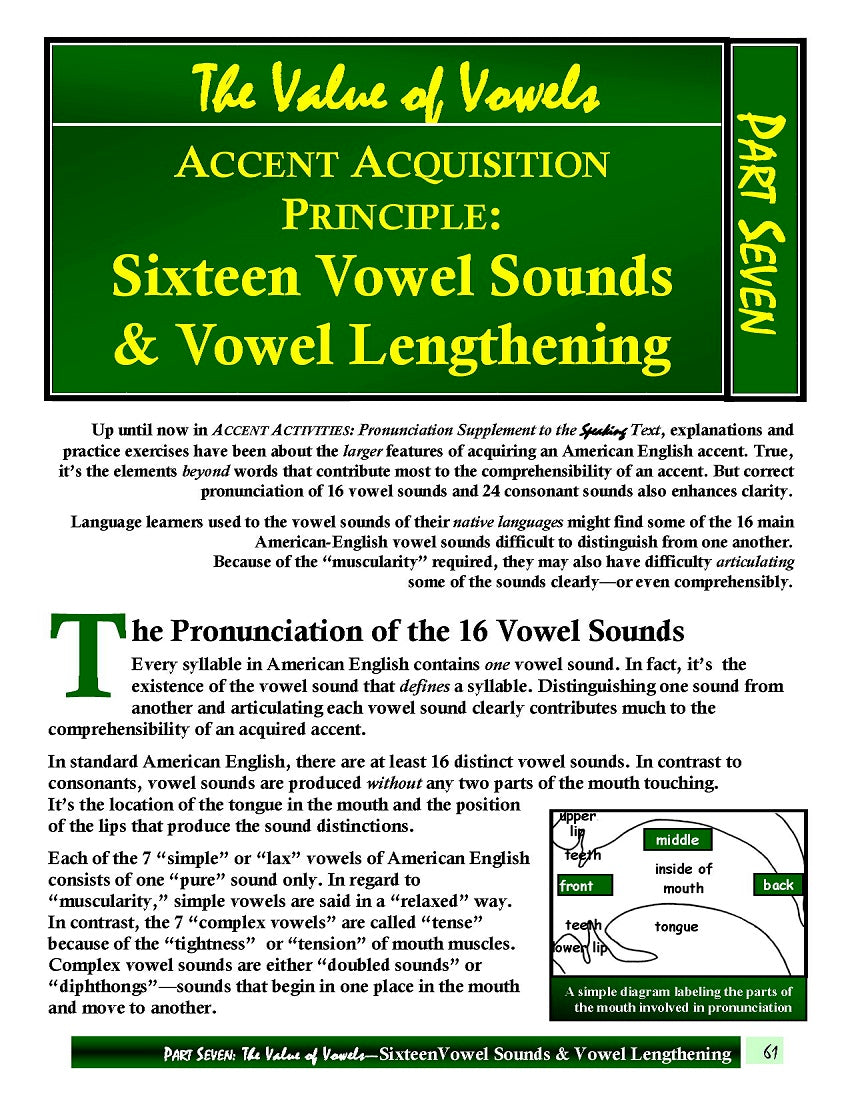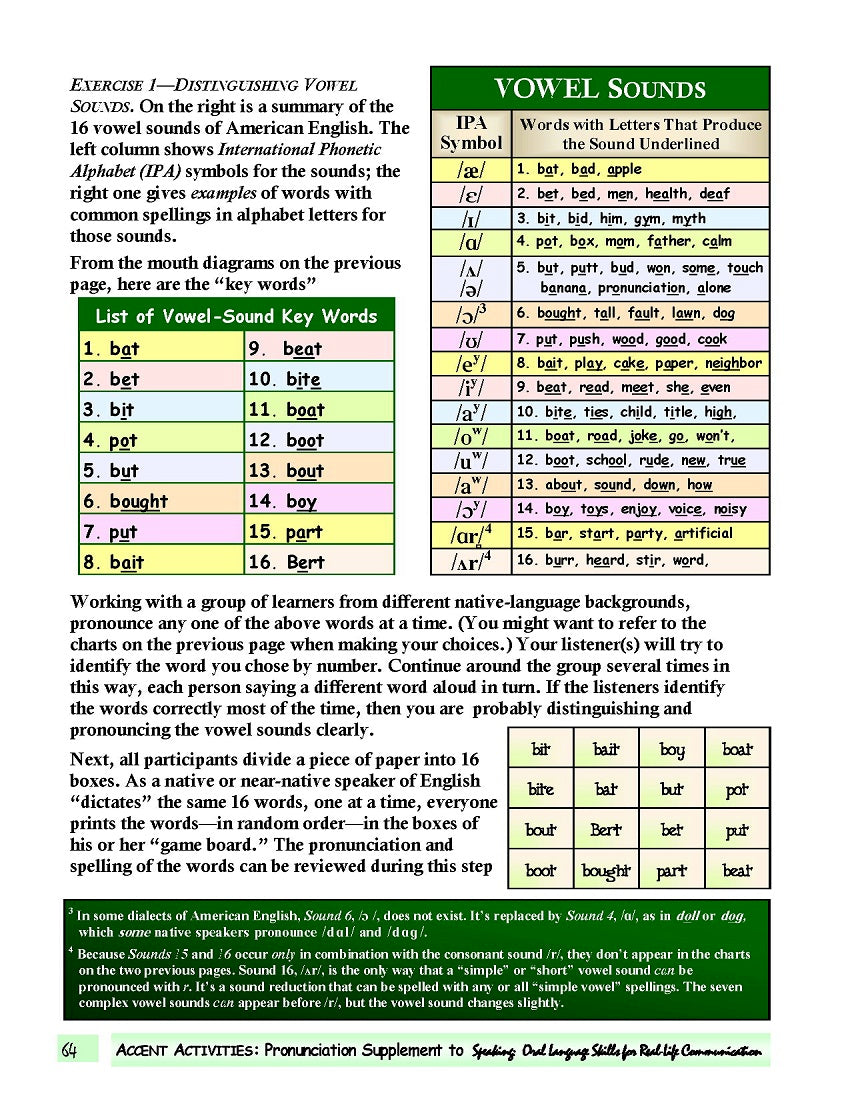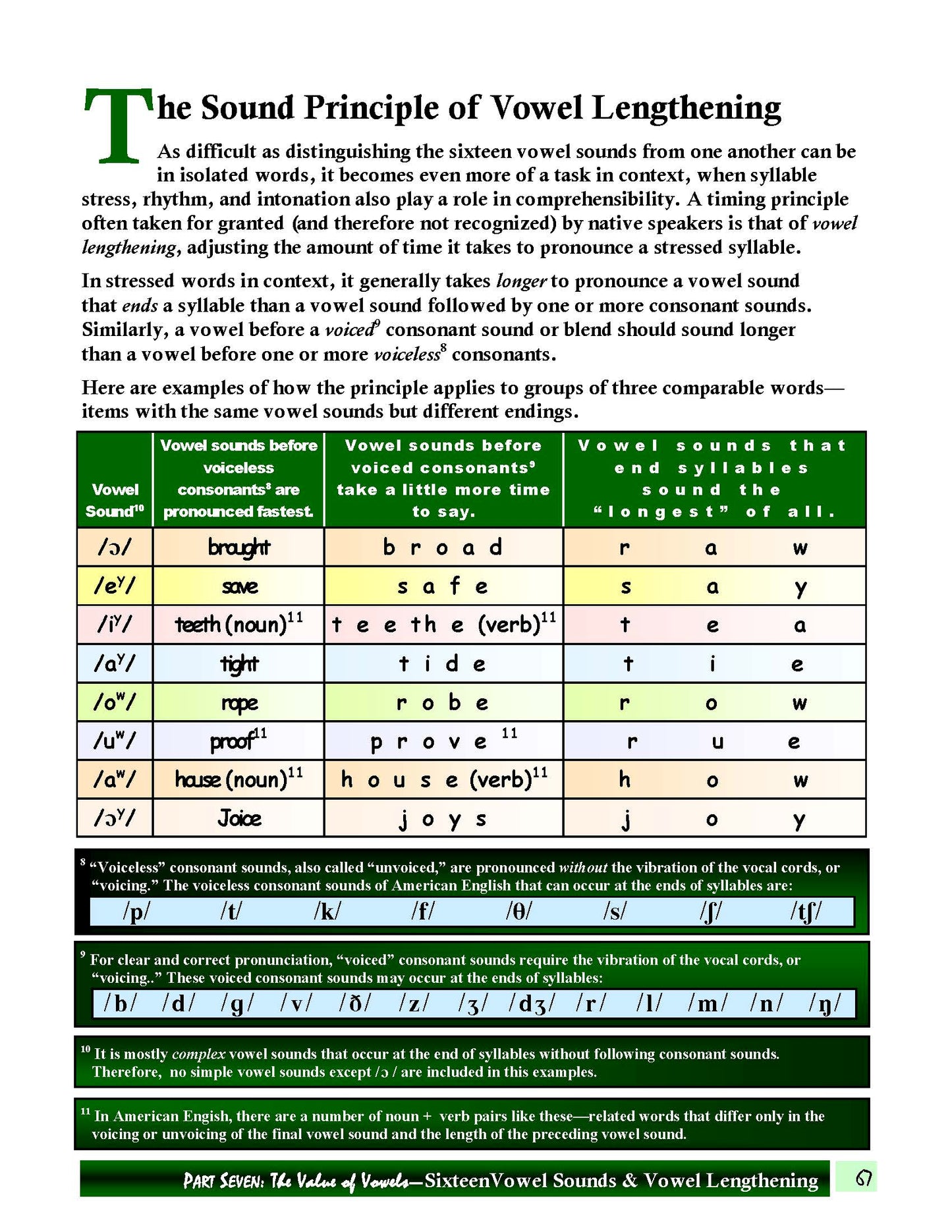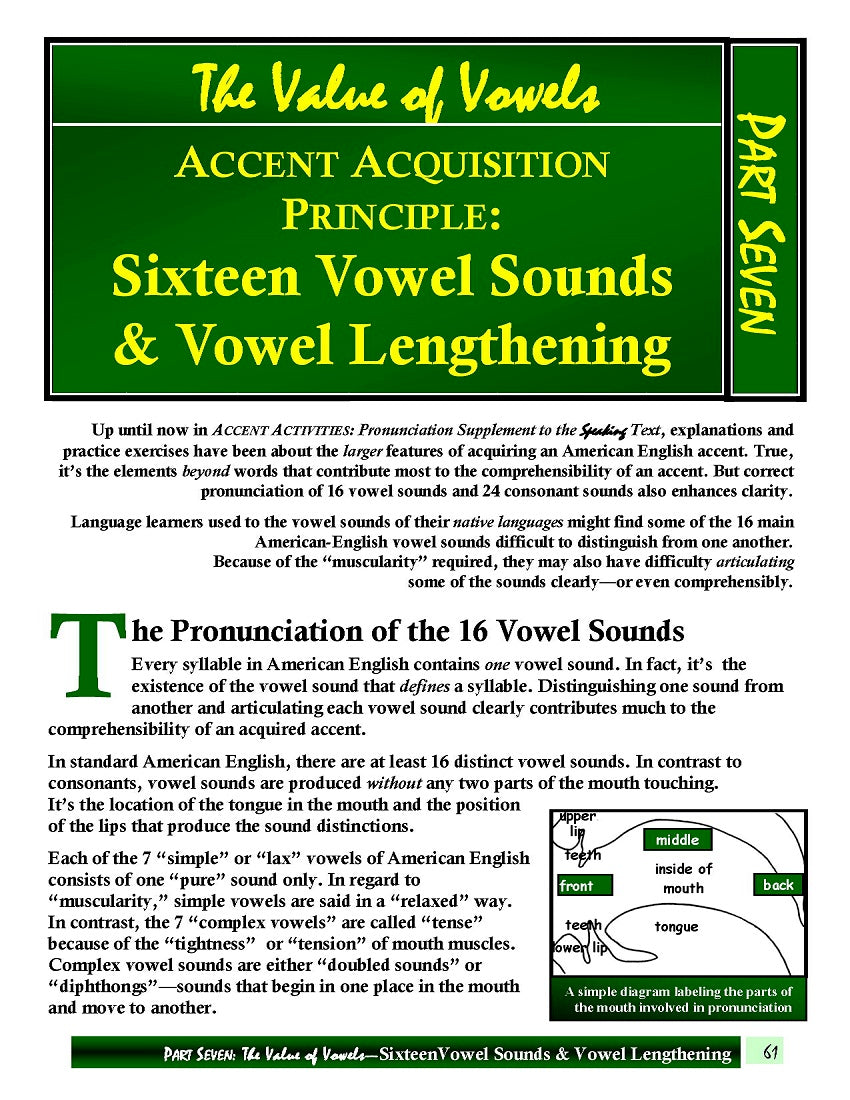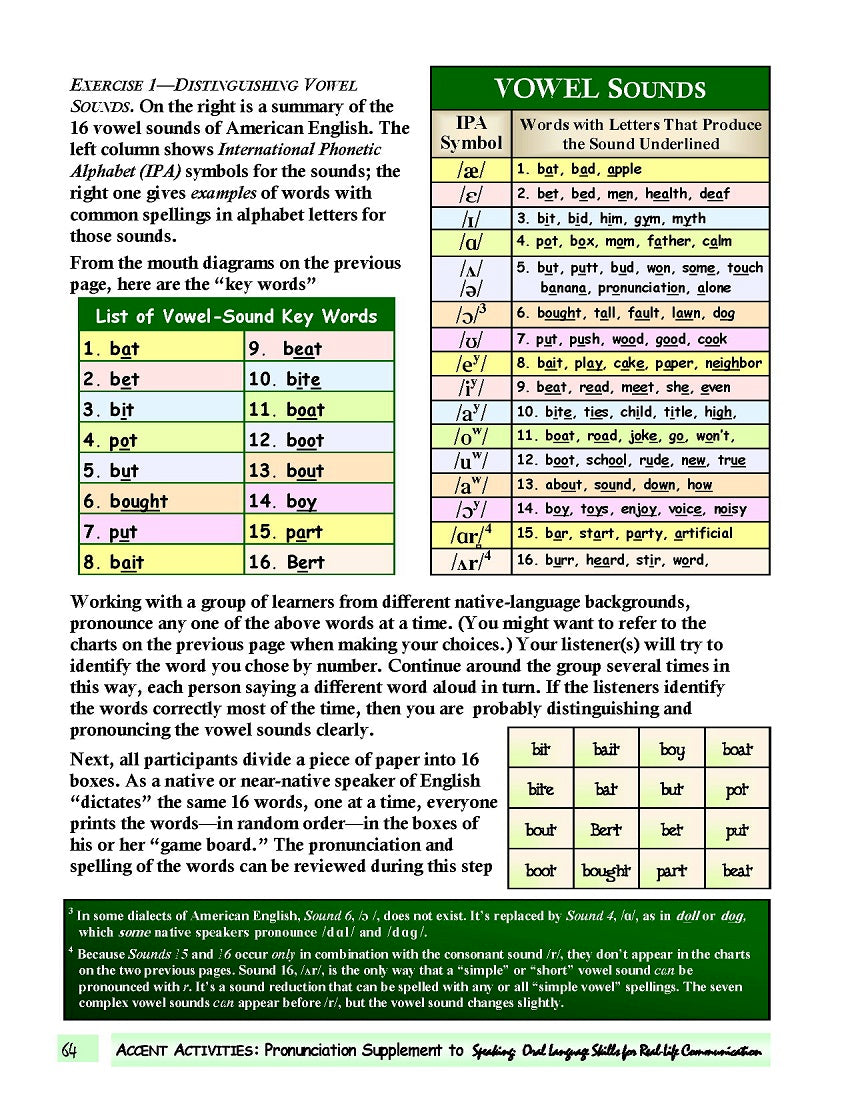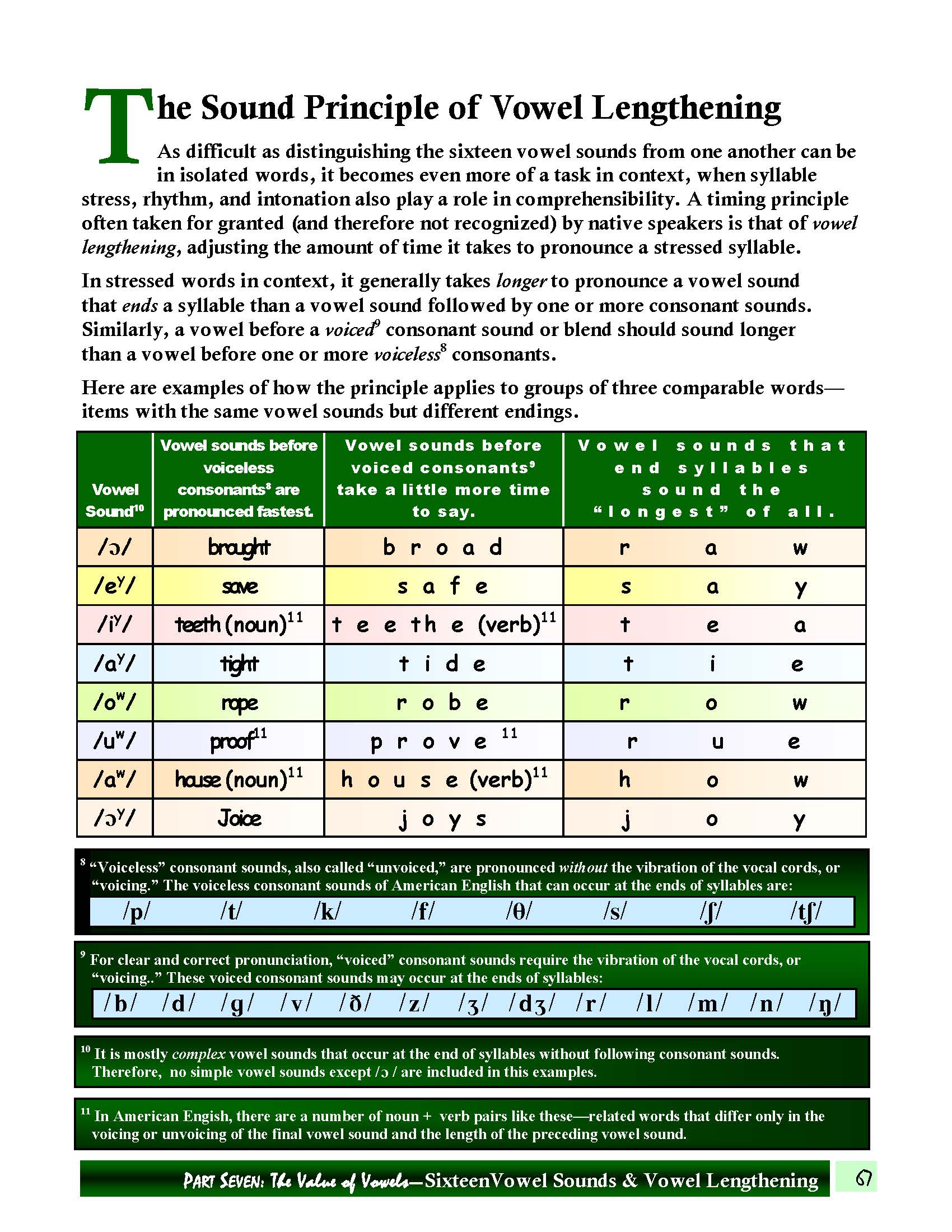1
/
of
3
Work/Life English
E-01.10 Review & Summarize the Pronunciation of 16 Vowel Sounds & Principle of Vowel Lengthening
E-01.10 Review & Summarize the Pronunciation of 16 Vowel Sounds & Principle of Vowel Lengthening
Regular price
$1.00 USD
Regular price
Sale price
$1.00 USD
Unit price
/
per
Accent Activities: Pronunciation Supplement to Speaking. Part Seven: The Value of Vowels: 16 Vowel Sounds & Vowel Lengthening
8 pages
Who It’s For: Intermediate & Above English (as a Second Language) Teachers, Learners, & Helpers Wanting the “Secrets” of Clear Pronunciation of Vowel Sounds
Why It’s Useful: A compact Review of the Formation Principles behind 16 main Vowel Sounds of American English may encourage language learners at any levels of proficiency. Especially helpful might be the concept of Vowel Lengthening (of sounds before final voiced or no consonants—in contrast to voiceless ones).
What You’ll Do:
[1] At a more fluent level, re-present or re-examine the principles of distinct (Simple vs. Complex) Vowel-Sound Production in various places of the mouth and with different mouth parts. In Exercise 1, differentiate the Vowels according to their Sound-Symbols & Spellings. With easily self-made Vowel-Sound Bingo materials, continue to practice these with other groups of (“minimally-paired”) word groupings.
[2] If new English learners are unfamiliar with the “Sound Principle of Vowel Lengthening,” they will pleased to discover another way to distinguish words with the same vowel sounds articulated a little differently—such as save vs. safe vs. say; teeth vs. teethe vs. tea; house (N) vs. house (V) vs. how; and many others. Appreciating this “revelation,” they can continue applying it to given and real-life examples.
Couldn't load pickup availability
